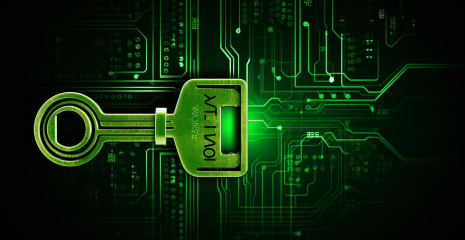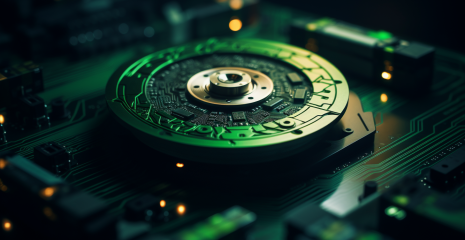

It was originally released in 2004 based on the E4M (encryption of the masses) software. Its development was discontinued on May 28, 2014, but its source code is still available for use. TrueCrypt is a free and open source disk encryption software available for many operating systems. TrueCrypt provides users with real-time encryption/decryption, parallelization, and pipelined processing to read/write to partitions as fast as unencrypted partitions, as well as plausible deniability via hidden volumes and hidden operating systems to hide user data even if he/she forced to reveal his password. In other words, it is a free utility for OTFE (encryption on the fly). It is used to create a virtual encrypted disk inside a file, encrypt part of the disk or even the whole disk.
TrueCrypt was a popular open source program used to encrypt files, folders, and entire disk partitions on the fly. It has been designed to run on a variety of operating systems, including Windows, macOS, and Linux. The software was created in 2004 by a group of developers who were passionate about computer security and privacy. TrueCrypt allowed users to create encrypted virtual disks, which were essentially files that could be mounted as a separate disk in the operating system. The software used a variety of encryption algorithms, including AES, Serpent, and Twofish, to protect data stored on virtual drives. Encryption was performed in real-time, meaning files were automatically encrypted and decrypted as they were accessed.
In addition to creating encrypted virtual drives, TrueCrypt also allowed users to encrypt entire system partitions or even entire hard drives. This meant that users could protect their entire system, including the operating system and all files, with a single password. TrueCrypt has built a reputation as a highly reliable encryption tool and has been widely used by individuals, companies, and even governments around the world. However, in 2014, the developers abruptly shut down the project, citing security concerns and warning users to switch to alternative encryption software.
Despite being discontinued, TrueCrypt remains a popular tool among many users who continue to use it for advanced encryption features. However, its security is no longer supported or updated, which means that its use carries some risk. As such, it is generally recommended that users consider other encryption tools that are now actively supported and updated.
1) We start TrueCrypt. It is recommended to use version 7.1a as it is the most stable and secure.
2) Go to the System tab of the TrueCrypt main window and select the sub-item to encrypt the system partition. Select Normal.
3) In the next window we see two points. Encrypt system partition – encrypts only the system partition. Encrypt All Drive – Encrypts all partitions on your hard drive. A special TrueCrypt boot area will be created for each of the items. Choose which item suits you best.
4) If you have only one operating system on your computer, select the first item. If you have several, choose the second item.
5) At this stage, you can select the encryption algorithm. It is recommended to select AES-Twofish-Serpent and click Next.
6) Now you need to invent a complex password that meets the requirements of the program, otherwise a reliable level of protection is not guaranteed. It is best to use password generators, and generate a password according to the requirements, in particular the extremely important number of characters.
7) Next, move the mouse squared, the longer the better to randomize the generated values. Then click Next.
8) Next, move the mouse squared, the longer the better to randomize the generated values. Then click Next.
9) Next, create a TrueCrypt recovery disk image. You must specify where it will be stored. You need to create and then burn it to disk, because otherwise you will not be able to go directly to the data encryption process.
10) After reading the warning, click OK.
11) Then, as mentioned, a tool for recording disk images will open. Be sure to write this image to disk – in case of an error in the boot record, it will save the situation. Accordingly, to burn, simply insert the CD and click burn.
12) If you have already recorded a disc, insert it into the drive and click on. The disk will be checked for errors. If the disc was recorded without errors, you will see the following window. Click on. If the disc was recorded with errors, you need to burn it again and again to check the disc, because without this you will not be able to proceed to the next step.
13) Next you need to select the cleaning mode. If you have information that can be at least some value, then choose at least 3 passes, but keep in mind that the encryption process will take several times longer. Once you have made your choice, click Next.
14) Next, the program offers to check whether the bootloader is working properly. The main thing is not to forget the password, because you will have to enter it now. Click Test.
15) Then offer to print a text report on problems that may arise during testing. It is important to remember the password and in which case use the TrueCrypt recovery disc. Click OK.
16) The bootloader will look like the one shown in the following figure. After entering the password, Windows will start downloading.
17) The test was passed successfully, you can start encryption directly. Click the “Encryption” button.
18) Then again offer to print the certificate. The main thing is not to turn off the computer and do not interrupt the program. If you are encrypting your laptop, it is recommended that you plug it into an outlet and disable sleep when idle. Click OK.
19) Direct encryption process. Be prepared to wait a long time for this process to complete. Wait for the operation to complete.
20) When the encryption process is complete, the following message will appear. Click OK.
21) Click ready.
Now you will need to enter the password every time the system boots. This will protect you from unauthorized access to information stored on your computer.

